To stack firewood for seasoning, create a stable base using pallets or a firewood rack to elevate the wood. Stack logs in rows, with gaps between logs for airflow. Position stacks in a sunny, open area, and cover the top with a tarp to protect against rain, while leaving sides exposed for ventilation.
Stacking firewood correctly is essential to ensure it seasons as quickly as possible. It also means you can stack more wood in a smaller space to prevent it from spreading throughout your yard. Keeping your firewood in a stack raised off the ground is also important for preventing termites from investing and eating your valuable logs.
The four most popular techniques for stacking firewood are rack, Norwegian round, German Holz Hausen, and Amish pyramid style.
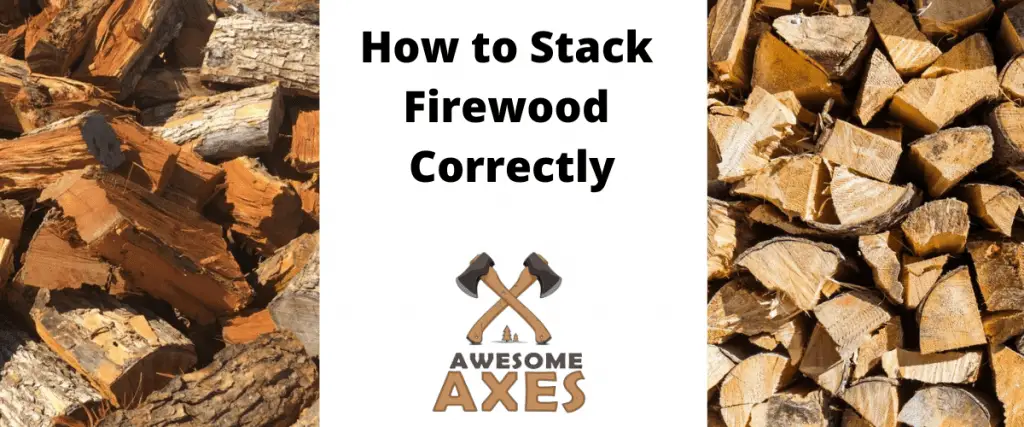
Table of Contents
Why Is Stacking Firewood Important?
Storing your firewood in a well-designed stack helps to reduce the seasoning time. Seasoning (or drying) is the process of reducing the moisture content of the wood to less than 20%. This increases the heat production per log and reduces the smoke generation by allowing sap pockets to seep out. Seasoned wood is also less likely to produce creosote in your chimney when it burns.
Stacking firewood maximizes airflow between individual logs and speeds up the drying process. The intent is to try and keep as much space as possible between individual pieces of firewood to allow the air to dry out the wood and keep the sides open for the sun to shine through. However, you should simultaneously keep a cover on the top to prevent rain from wetting the logs.
4 Methods to Stack Firewood to Maximize drying
There are dozens of techniques for stacking your firewood that abide by the above guidelines. You should consider how much firewood you need, how much seasoning time you need, and the space limitations of your backyard.
1. Use a Firewood Rack
The most common method is to use a firewood rack. This DIY or store-bought rack generally made from wood or steel provides a structure to support your wood. A rack stops the wood from falling over and gives it target dimensions.
Most firewood racks come in a cord or face-cord size to shape your stack in a long thin style. This helps to maximize airflow on both sides while allowing the sun to hit almost every log.
You can see an example of wood stacked in a firewood rack in the image below. This rack also keeps the wood off the ground to reduce the risk of termites through some cinderblocks. I would also recommend putting a tarp on the top of this stack to prevent water ingress through rain.
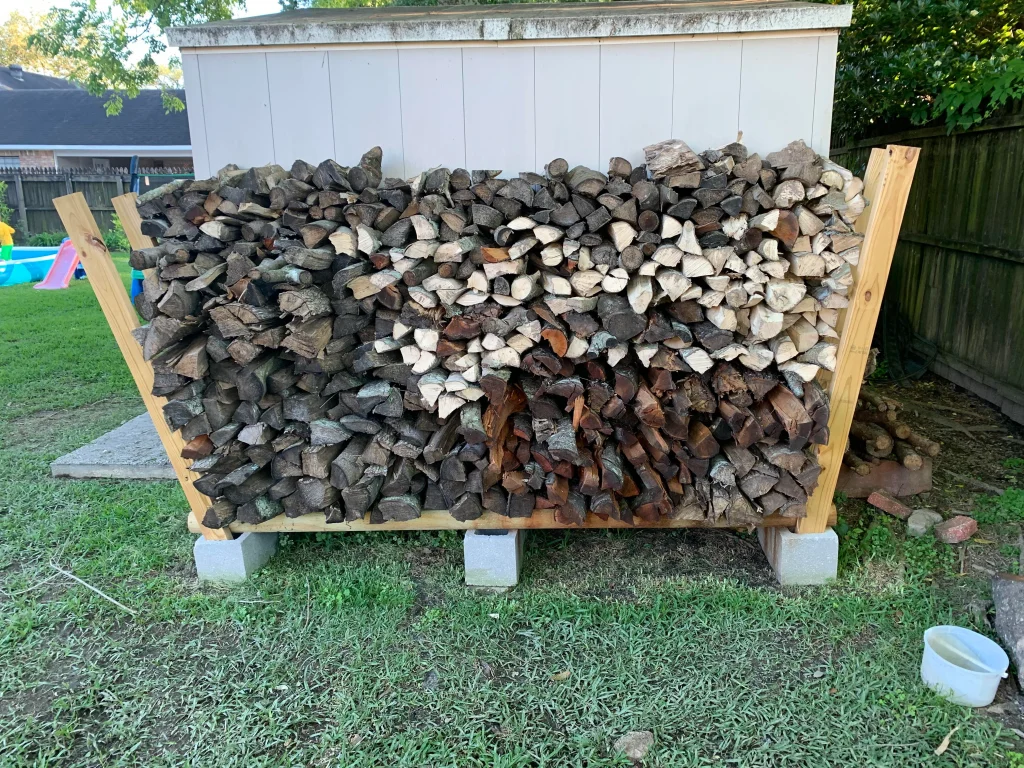
2. Norwegian Round Stack
The second technique is the Norwegian round stack. This is built by creating a circular firewood shell filled with more logs. The roof is created by continuing the twisted firewood shell, which helps funnel rainwater away from the center without requiring a top covering.
Norwegian round stacks provide a stylish and space-saving method for storing large quantities of wood. They have become much less common in modern times but are certainly eye-catching.
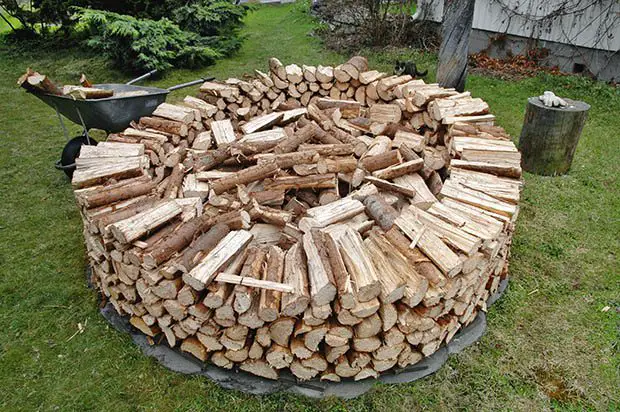
3. German Holz Hausen
The third technique is the German Haus Hausen, which translates to Wood House in English. Like the Norwegian round, their best attribute is their stylish look rather than their wood-drying characteristics.
To build a Holz Hausen, start by staking a 7-foot tall pole in the exact center of the stack. The firewood is stacked in a circle with a downwards and inwards facing angle towards the stake. After every 3-4 rows of inwards facing firewood, a perpendicular layer is added to act as a base layer for the next upper rows.
The roof is then constructed of outwards facing firewood to channel rain away from the internals of the stack without requiring a tarp covering.
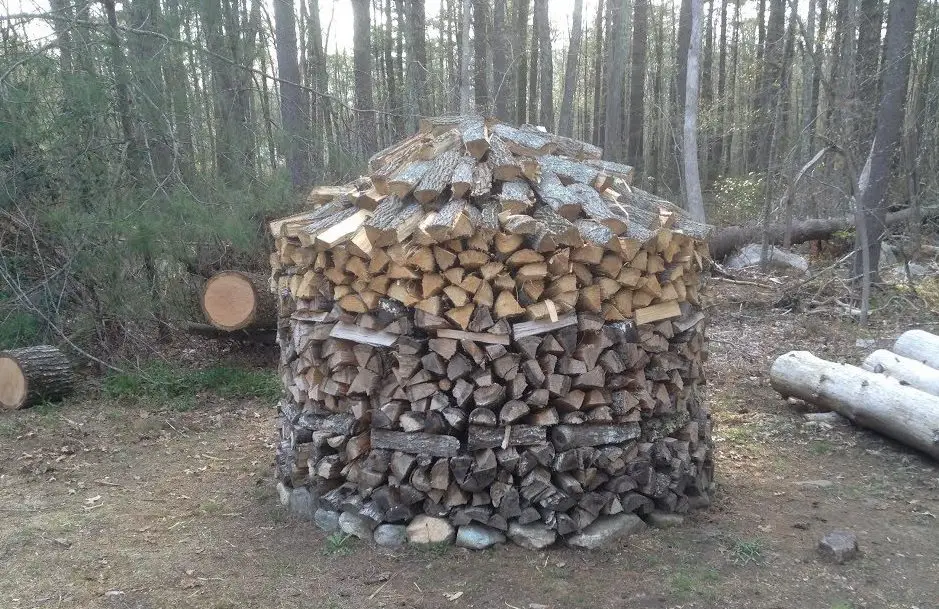
4. Amish Firewood Stack
Finally is the pyramid or teepee style favored by Amish communities. This is built by stacking the firewood in a nearly vertical direction. This helps channel firewood away from the internal logs while exposing more of the wood to airflow. The size of the stacks should be kept to a minimum to prevent too many logs from being hidden in the center.
The circular firewood stacks pose a problem with drying the internal logs, which don’t get the same amount of airflow or sunlight.
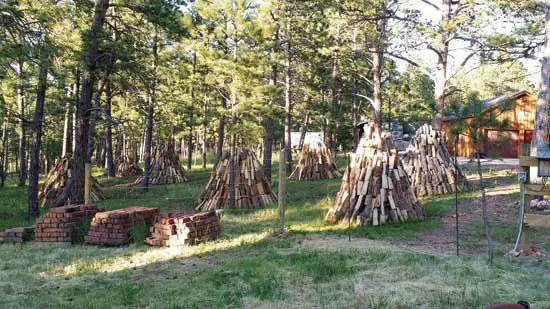
How to Stack Firewood Properly
There are four key characteristics of any firewood stack to ensure that it maximizes drying as much as possible:
Cover it from Rain
Most landowners put a tarp covering on the top of their firewood stack to prevent rain from wetting the logs. Rain can significantly increasing the risk of your firewood rotting – certain species of wood are particularly vulnerable to decay. A simple tarp cover can solve this problem and ensure more mass of firewood has survived through to winter.
Rain also takes multiple days for firewood to dry out back to the pre-rain moisture content. Protecting your stack from rain can wipe months off your seasoning time.
Lift it off the Ground
Stacking your firewood on the ground is the perfect invitation for termites. If you have dense hardwood that takes several years to season, then you can find that a substantial mass of your wood has been eaten by termites by the time you use it. This is a huge waste easily prevented by storing your firewood off the ground and away from other wooden structures.
Most firewood racks or carts have a raised base to prevent termite infestation.
Maximize Airflow
Stacking your firewood to allow air to flow around individual logs is essential to reducing the seasoning time. In my experience, this can as much as half the drying time, which is invaluable for dense hardwoods that can take multiple years to season properly.
A common technique is to stack in a Jenga style where the first piece is stacked east to west, and the next is stacked north to south.
Sun on the Sides
You should always keep the sides of your firewood stack open to allow airflow through and the sun to dry out the sides. Sunlight is a good termite prevention method but also heats up the stack and increases the drying rate.
This is also why you will often see firewood stacked in long, thin lines – so the sun can hit half the logs in the morning and the other half in the afternoon.
Conclusion
There are dozens of different methods and strategies for stacking firewood to maximize drying time within the constraints of your garden’s dimensions. You must consider how much wood you need to stack and the expected seasoning time to ensure your wood is dry before winter. Stacking your firewood correctly is essential to ensuring it is all dry to get the most heat and least smoke generation. I hope this guide has given you some ideas about how to stack firewood in your yard this year.
